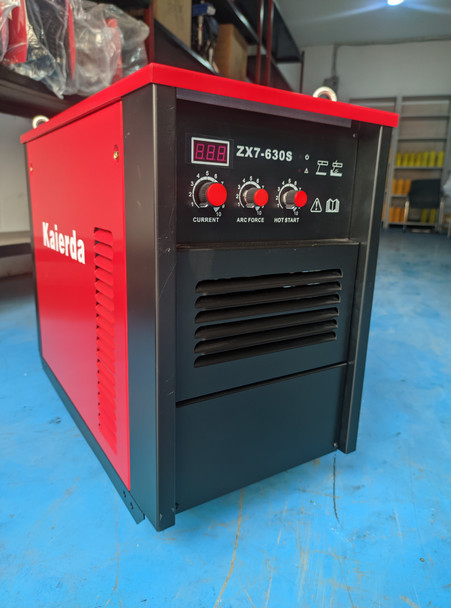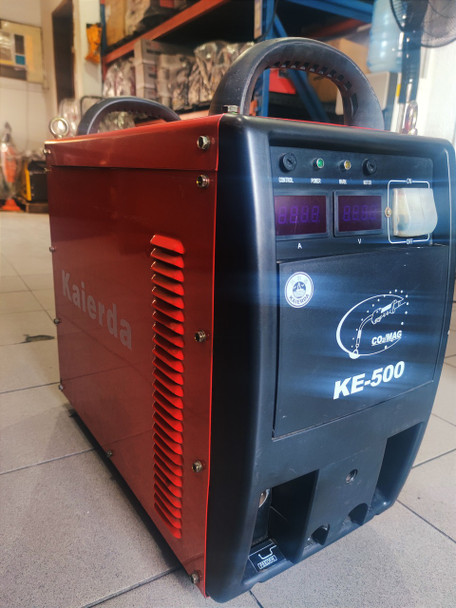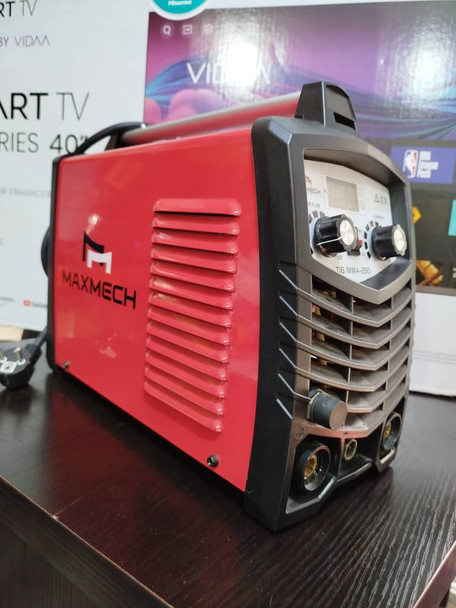Revolutionizing Welding: Latest Advancements in Welding Machine Technology Introduction
Key Takeaways
Introduction
The welding industry is undergoing a significant transformation as new technologies revolutionize traditional processes, enhancing both efficiency and precision. Recent advancements in welding machine technology have introduced innovations such as automated systems, robotic welding, and advanced control interfaces, which are reshaping the landscape of industrial welding.
These cutting-edge machines offer greater versatility, allowing for more complex welding tasks with a higher degree of accuracy. Additionally, the focus on energy efficiency and user-friendly designs has made these machines more accessible and cost-effective for a wide range of applications. As the industry continues to evolve, these technological advancements are setting new standards for quality and productivity in welding, making it an exciting time for both seasoned professionals and newcomers alike.
This article explores the latest advancements in welding machine technology, highlighting how these innovations are revolutionizing the industry and enhancing productivity, quality, and sustainability.
Kaierda Inverter Manual Arc Welding Machine
Overview of Welding Machine Technology
Traditional Welding Machines
Traditional welding machines, such as MIG (Metal Inert Gas), TIG (Tungsten Inert Gas), and Stick welding machines, have long been the backbone of the welding industry. These machines are known for their reliability and versatility, capable of handling various metals and thicknesses. MIG welding, for example, is widely used for its speed and ease of use, making it ideal for both beginners and professionals. TIG welding, on the other hand, offers precision and control, making it the go-to choice for delicate tasks and high-quality finishes. Stick welding, or Shielded Metal Arc Welding (SMAW), remains popular for its simplicity and effectiveness in outdoor conditions.
However, these traditional machines are not without their limitations. For instance, they often require significant energy consumption, can be less efficient in terms of material usage, and may struggle with precision in certain applications. Moreover, the need for constant manual adjustment can lead to inconsistencies in weld quality, particularly in complex or large-scale projects.
Key Challenges in Traditional Welding
The limitations of traditional welding methods present several challenges in today’s fast-paced industrial environment. Efficiency is a major concern, as manual welding processes can be time-consuming and labor-intensive. This not only increases production time but also drives up costs. Precision is another critical issue, especially in industries like aerospace and automotive, where even the smallest welding defects can lead to significant failures.
Material limitations also pose a challenge, as some traditional welding methods may not be suitable for certain advanced materials, such as high-strength alloys or composites. These materials are increasingly used in modern manufacturing due to their superior properties, but welding them often requires specialized equipment and techniques.
The Push Towards Modernization
Given these challenges, the push towards modernization in welding technology is driven by the need for greater efficiency, precision, and versatility. Industry demands for higher productivity, better quality control, and the ability to work with a wider range of materials have spurred significant advancements in welding machine technology. Modern welding machines are now being equipped with smart features, advanced power sources, and automation capabilities that address the shortcomings of traditional methods while opening up new possibilities for industrial applications.
Kaierda Tig Welding machine WS500N
Key Advancements in Welding Machine Technology
1. Smart Welding Machines
One of the most significant advancements in welding technology is the development of smart welding machines. These machines leverage artificial intelligence (AI) and the Internet of Things (IoT) to offer unprecedented levels of control and automation. Smart welding machines can automatically adjust parameters such as voltage, current, and speed based on real-time feedback from sensors. This ensures consistent weld quality, reduces the likelihood of human error, and improves overall efficiency.
Furthermore, these machines can be integrated into a networked environment, allowing for remote monitoring and control. This is particularly useful in large-scale operations where multiple welding stations need to be managed simultaneously. By analyzing data from each weld, smart machines can also predict maintenance needs, reducing downtime and extending the life of the equipment.
2. Laser Welding
Laser welding represents another groundbreaking advancement in the field. Unlike traditional welding methods, which rely on electric arcs or flames, laser welding uses a concentrated beam of light to melt and join materials. This method offers several advantages, including unmatched precision, minimal heat input, and the ability to weld at high speeds.
The precision of laser welding makes it ideal for applications requiring fine detail and tight tolerances, such as in the aerospace and electronics industries. Moreover, the reduced heat input minimizes the risk of thermal distortion, which is particularly important when working with sensitive materials or components. Laser welding is also highly versatile, capable of joining a wide range of materials, including metals, plastics, and even dissimilar materials.
3. Hybrid Welding Systems
Hybrid welding systems combine the best aspects of multiple welding techniques to achieve superior results. For instance, a hybrid laser-arc welding system combines the speed and precision of laser welding with the robustness of traditional arc welding. This combination allows for deeper penetration and faster welding speeds, making it ideal for thick materials and challenging environments.
Hybrid systems are particularly useful in industries that require high-strength welds, such as shipbuilding and heavy machinery manufacturing. By integrating different welding methods, hybrid systems can achieve a balance between speed, strength, and quality that is difficult to attain with any single technique.
Kaierda Gas-Shielded Welding Machine CO2/MAG KE-500
The Impact of Advanced Welding Technologies
1. Increased Productivity
The adoption of advanced welding technologies has significantly boosted productivity across various industries. Smart welding machines, for instance, automate many aspects of the welding process, allowing operators to complete tasks faster and with greater consistency. This automation reduces the need for manual adjustments, enabling welders to focus on more complex aspects of their work or manage multiple machines simultaneously.
Laser welding, with its high-speed capabilities, also contributes to productivity gains. Its ability to perform precise welds at rapid speeds means that more work can be completed in less time, which is particularly beneficial in high-volume manufacturing settings like automotive production. The integration of hybrid systems further enhances productivity by combining the strengths of different welding techniques, allowing for quicker and more efficient processes without compromising on quality.
2. Enhanced Quality and Precision
One of the most notable benefits of modern welding technology is the significant improvement in weld quality and precision. Smart welding machines, equipped with advanced sensors and AI algorithms, can monitor the welding process in real time and make instant adjustments to ensure optimal conditions. This results in more consistent welds with fewer defects, which is critical in industries where precision is paramount, such as aerospace and medical device manufacturing.
Laser welding’s precision is unmatched, allowing for the creation of intricate welds that would be difficult or impossible with traditional methods. This precision is crucial for applications that demand tight tolerances and clean finishes, such as in the electronics industry, where even the smallest imperfections can affect product performance.
3. Energy Efficiency and Sustainability
As industries move towards more sustainable practices, energy efficiency has become a key consideration in welding technology. Advanced welding machines are designed to consume less energy while delivering the same or better performance compared to their traditional counterparts. Inverter-based welding machines, for example, are more energy-efficient than conventional transformer-based machines, offering significant energy savings over time.
Laser welding also contributes to sustainability by reducing the amount of heat and energy required for the welding process. This not only lowers energy consumption but also minimizes the risk of thermal damage to the materials being welded, reducing waste and rework. Moreover, the ability to weld with precision means less material is required, further contributing to resource conservation.
4. Cost Efficiency
While the initial investment in advanced welding machines may be higher, the long-term cost savings they offer are substantial. Automation and smart technology reduce the need for skilled labor, lowering labor costs and minimizing the risk of human error, which can lead to costly rework or repairs. Additionally, the improved energy efficiency of modern machines translates into lower operating costs over time.
The durability and reliability of advanced welding systems also mean less frequent maintenance and downtime, which further contributes to cost savings. For industries where welding is a critical component of production, these savings can add up to a significant reduction in overall production costs, improving profitability and competitiveness.
5. Safety Improvements
Safety is a major concern in welding, where workers are exposed to high heat, UV radiation, and potentially harmful fumes. Advanced welding technologies have made significant strides in improving safety for operators. For example, smart machines can be programmed to automatically shut down or adjust settings if unsafe conditions are detected, reducing the risk of accidents.
Laser welding, which often requires less manual intervention, can also enhance safety by minimizing the exposure of workers to hazardous conditions. Additionally, the precision and control offered by modern machines reduce the likelihood of mistakes that could lead to dangerous situations. Some advanced systems are even equipped with remote operation capabilities, allowing operators to manage the welding process from a safe distance.
Maxmech Inverter Welding Machine TIG/MMA-400
Industry Applications of Modern Welding Technology
1. Automotive Industry
The automotive industry has been one of the biggest beneficiaries of advancements in welding technology. Modern welding machines enable the production of lighter, stronger, and safer vehicles by allowing for the use of advanced materials like high-strength steel and aluminum alloys. Laser welding, in particular, is widely used in the automotive sector for tasks that require precision and speed, such as the assembly of car bodies and the joining of key structural components.
Hybrid welding systems are also gaining traction in automotive manufacturing, where the combination of different welding techniques allows for the creation of complex joints that can withstand the stresses of everyday use. These advancements are not only improving the quality and durability of vehicles but also helping manufacturers meet increasingly stringent environmental and safety standards.
2. Aerospace and Defense
In the aerospace and defense industries, where the stakes are incredibly high, the demand for precision and reliability in welding is paramount. Advanced welding technologies, such as laser and hybrid welding, are critical for producing components that meet the rigorous standards of these sectors. For example, the precision of laser welding is essential for assembling intricate parts used in aircraft and spacecraft, where even the smallest flaw can have catastrophic consequences.
Smart welding machines are also invaluable in these industries, providing the ability to monitor and control welding processes with a high degree of accuracy. This ensures that all components meet the strict specifications required for aerospace and defense applications, where failure is not an option.
3. Construction and Infrastructure
The construction and infrastructure sectors are increasingly turning to advanced welding technologies to enhance the quality and efficiency of large-scale projects. Portable welding machines, which combine power with mobility, are particularly useful on construction sites where flexibility and ease of use are essential. These machines allow workers to perform high-quality welds in various environments, from urban construction sites to remote infrastructure projects.
Hybrid welding systems are also being used to join large steel structures, providing the strength and durability needed for buildings, bridges, and other infrastructure. The ability to perform precise, high-quality welds with advanced technology is helping the construction industry meet the demands of modern architecture, where safety and longevity are critical.
Maxmech Inverter Welding Machine TIG/MMA-250S
Future Trends in Welding Machine Technology
1. AI and Machine Learning in Welding
The integration of artificial intelligence (AI) and machine learning into welding technology is set to revolutionize the industry further. AI-powered welding machines can analyze vast amounts of data from past welding processes to optimize future operations. This capability allows for predictive maintenance, where machines can anticipate issues before they occur, reducing downtime and improving overall efficiency. Moreover, machine learning algorithms can continuously refine welding parameters based on real-time feedback, ensuring that each weld is of the highest quality.
2. Robotics and Automation
Robotics and automation are becoming increasingly prevalent in welding, especially in industries that require high-volume production. Robotic welding systems can perform repetitive tasks with incredible speed and precision, significantly reducing the time and labor required. These systems are particularly useful in automotive and aerospace manufacturing, where consistent weld quality is critical. The use of automation not only enhances productivity but also reduces the risk of human error, leading to better overall product quality.
3. Virtual and Augmented Reality (VR/AR) in Welding
Virtual and augmented reality technologies are beginning to make their mark in the welding industry, particularly in training and process monitoring. VR welding simulators provide a safe, controlled environment for training new welders, allowing them to practice and refine their skills without the risk of injury or material waste. AR, on the other hand, can be used in real-time welding operations to overlay critical information onto the welder’s field of vision, such as optimal weld paths or potential hazards. This technology enhances the accuracy and safety of the welding process.
4. Additive Manufacturing and Welding
The convergence of welding and additive manufacturing, also known as 3D printing, is opening up new possibilities in the production of complex components. Additive manufacturing allows for the creation of parts with intricate geometries that would be difficult or impossible to produce using traditional methods. By integrating welding into the additive manufacturing process, manufacturers can create stronger, more durable components with fewer weak points. This hybrid approach is particularly promising in industries like aerospace, where lightweight, high-strength components are essential.
5. Sustainable Welding Practices
Sustainability is a growing concern across all industries, and welding is no exception. Future trends in welding technology are focused on reducing the environmental impact of the process. This includes the development of eco-friendly welding materials and methods that minimize waste and energy consumption. Advances in energy-efficient welding machines, such as those using inverter technology, are also contributing to more sustainable practices. As industries increasingly prioritize sustainability, the demand for greener welding solutions will continue to grow.
Case Studies: Success Stories in Welding Technology
1: Smart Welding Systems in Automotive Manufacturing
A leading automotive manufacturer adopted smart welding systems across its production lines, resulting in a 20% increase in production efficiency and a significant reduction in weld defects. The AI-powered machines adjusted parameters in real-time, ensuring consistent weld quality and reducing the need for rework.
2: Laser Welding in Aerospace Component Production
An aerospace company implemented laser welding technology for the assembly of aircraft components. The precision and speed of laser welding allowed for the production of high-quality parts with minimal thermal distortion, meeting the stringent standards required for aerospace applications.
3: Portable Welding Machines in Construction Projects
A construction firm introduced portable welding machines for on-site operations, enhancing the flexibility and mobility of its workforce. The machines’ ease of use and reliability contributed to the timely completion of a large infrastructure project, with improved weld quality and reduced labor costs.
Frequently Asked Questions
1. What are the benefits of using smart welding machines?
Smart welding machines offer numerous benefits, including enhanced control, consistent weld quality, and reduced human error. They can automatically adjust parameters based on real-time data, ensuring optimal conditions for each weld.
2. How does laser welding compare to traditional welding methods?
Laser welding provides greater precision, speed, and minimal heat input compared to traditional methods. It’s ideal for applications requiring fine detail and is especially useful for working with sensitive materials.
3. What industries benefit the most from hybrid welding systems?
Hybrid welding systems are particularly beneficial in industries like shipbuilding, heavy machinery, and automotive manufacturing, where the combination of different welding techniques can produce stronger, more durable joints.
4. How is AI being used in welding?
AI is used in welding to optimize parameters, predict maintenance needs, and enhance process control. By analyzing data from previous welds, AI can continuously improve welding outcomes, leading to higher efficiency and quality.
5. What role does sustainability play in the future of welding?
Sustainability is becoming increasingly important in welding, with advancements focusing on energy efficiency, waste reduction, and the use of eco-friendly materials. These practices not only benefit the environment but also reduce costs and improve operational efficiency.
Other Related Articles
How Modern Welding Technology is Changing the Fabrication Industry
Beginner's Guide: Basic Welding Techniques and How to Master Them
The Role of Welding in Modern Construction and Manufacturing
Conclusion
The welding industry is undergoing a transformation driven by technological advancements that enhance productivity, precision, and sustainability. From smart machines and laser welding to the integration of AI and robotics, these innovations are revolutionizing how welding is performed across various sectors. As industries continue to evolve, staying ahead of these trends will be crucial for companies looking to maintain a competitive edge. Embracing the latest welding technologies not only improves operational efficiency but also ensures that products meet the highest standards of quality and safety.
Call to Action: To explore the latest in welding machine technology and find the perfect solution for your needs, visit GZ Industrial Supplies. Discover a wide range of advanced welding machines and accessories designed to meet the demands of today’s industrial challenges.













